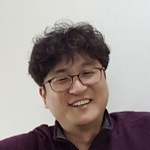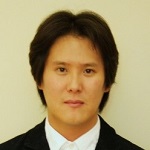
Overview of Quantum Technology Research
Kyung Hee University faculty members of Quantum Workforce Center have all Ph.D. in Mathematics. Hence all research areas of quantum information scientists in Kyung Hee University are based on Mathematics. For example, quantification of quantum correlations such as quantum entanglement and nonlocality, investigation of properties of bipartite or multipartite quantum correlations and quantum communication over the correlations, construction of quantum algorithms with quantum advantage, and analysis on performance of quantum algorithms.
Professors and Laboratories
 Department of Mathematics / professor Soojoon Lee
Department of Mathematics / professor Soojoon Lee
Research on quantum information theory (quantum entanglement, quantum Shannon theory), quantum communication theory including quantum cryptography, and quantum algorithm theory (quantum algorithms showing quantum advantage, computational complexity theory, quantum approximate optimization algorithms).
이수준 교수님 <Kyung Hee University Quantum Information (KHUQI) Group >
Homepage ≫ http://web.khu.ac.kr/~level, https://sites.google.com/view/khuqi
Overall research theme :
Our research includes two areas of quantum information science. 1) Quantum information theory; It aims to investigate properties of capacities of quantum channels, bipartite or multipartite entanglement and to discover operational meanings of quantum communication protocols. 2) Quantum algorithm theory; It aims to construct quantum algorithms with quantum advantage compared to all classical algorithms, and to analyze their performance and computational complexity.
 Department of Mathematics / professor Jeongsan Kim
Department of Mathematics / professor Jeongsan Kim
Research on the limitations of quantum entanglement and multi-particle entanglement along with quantum algorithm theory research.
김정산 교수님 <Quantum Computing Laboratory >
Homepage ≫ https://sites.google.com/view/khuqclab
Overall research theme :
Our research aims to develop better ways of controlling physical states of light in pursuit of future photonics technologies in emerging industrial areas – Tbit/s-level data processing & telecommunications, next-generation display devices, remote sensors, and low-power & high-speed artificial-intelligence modules.

